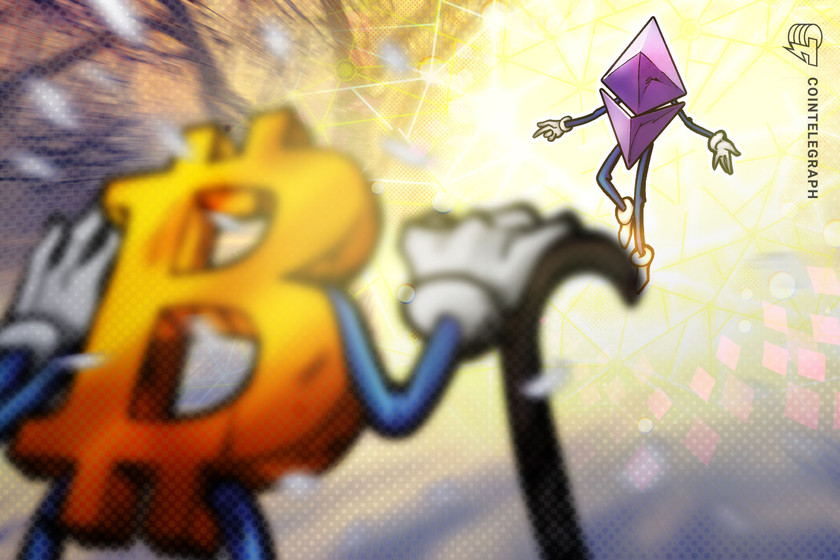Ethereum is up 15% versus Bitcoin since Shapella — More ETH price gains ahead?


Ether stakers have withdrawn $1.21 billion worth of ETH from Ethereum staking contracts since the Shapella upgrade.
Ether (ETH) entered a sharp price recovery a week after hitting a six-month low versus Bitcoin (BTC).
On April 18, the widely-tracked ETH/BTC pair reached 0.0709 BTC, up about 15% from its local bottom of 0.0602 BTC six days ago. Now, the pair eyes a run-up toward 0.075 BTC by June, based on the fractal setup previously discussed here.


Ethereum’s Shapella FOMO
Interestingly, Ether’s local bottom formation versus Bitcoin occurred on the day of Ethereum’s long-awaited Shapella upgrades.
The hard fork enables Ether stakers to withdraw their rewards — around 1.1 billion ETH — from Ethereum’s proof-of-stake smart contract. This update may have boosted ETH’s appeal compared to BTC, beating anticipations that a freshly unlocked Ether supply would increase sell pressure.
Stakers have withdrawn 574,700 ETH — worth about $1.21 billion — since the Shapella upgrades on April 12, according to data fetched by Nansen. Interestingly, Ether’s price in U.S. dollar terms has increased by 14.25% in the same period.


It means that many stakers have decided to hold onto their Ether rewards. On the other hand, Bitcoin has failed to log a decisive breakout above its technical resistance of $30,000, possibly making ETH a more attractive short-term bet for traders.
Weak institutional inflows versus Bitcoin
Institutional investors have shown more interest in Bitcoin than Ether in the past week, according to CoinShares’ weekly report.
For instance, Bitcoin-based investment vehicles witnessed $103.8 million in inflows in the week ending April 14. In comparison, Ethereum funds attracted $300,000, showing that mainstream investors may have followed the “sell the news” strategy after the Shapella upgrades.


Ether’s price, meanwhile, is also at risk of a possible bearish reversal move due to its overbought daily relative strength index.
Related: Shapella could bring institutional investors to Ethereum despite risks
If ETH price retreats from its current resistance level of around $2,140, its immediate downside target appears at around $1,984, which acted as resistance in May 2022 and August 2022.


An extended sell-off could push Ether price down to its 50-day exponential moving average (50-day EMA; the red wave) near $1,800, down about 15% from its current price levels.
This article does not contain investment advice or recommendations. Every investment and trading move involves risk, and readers should conduct their own research when making a decision.





